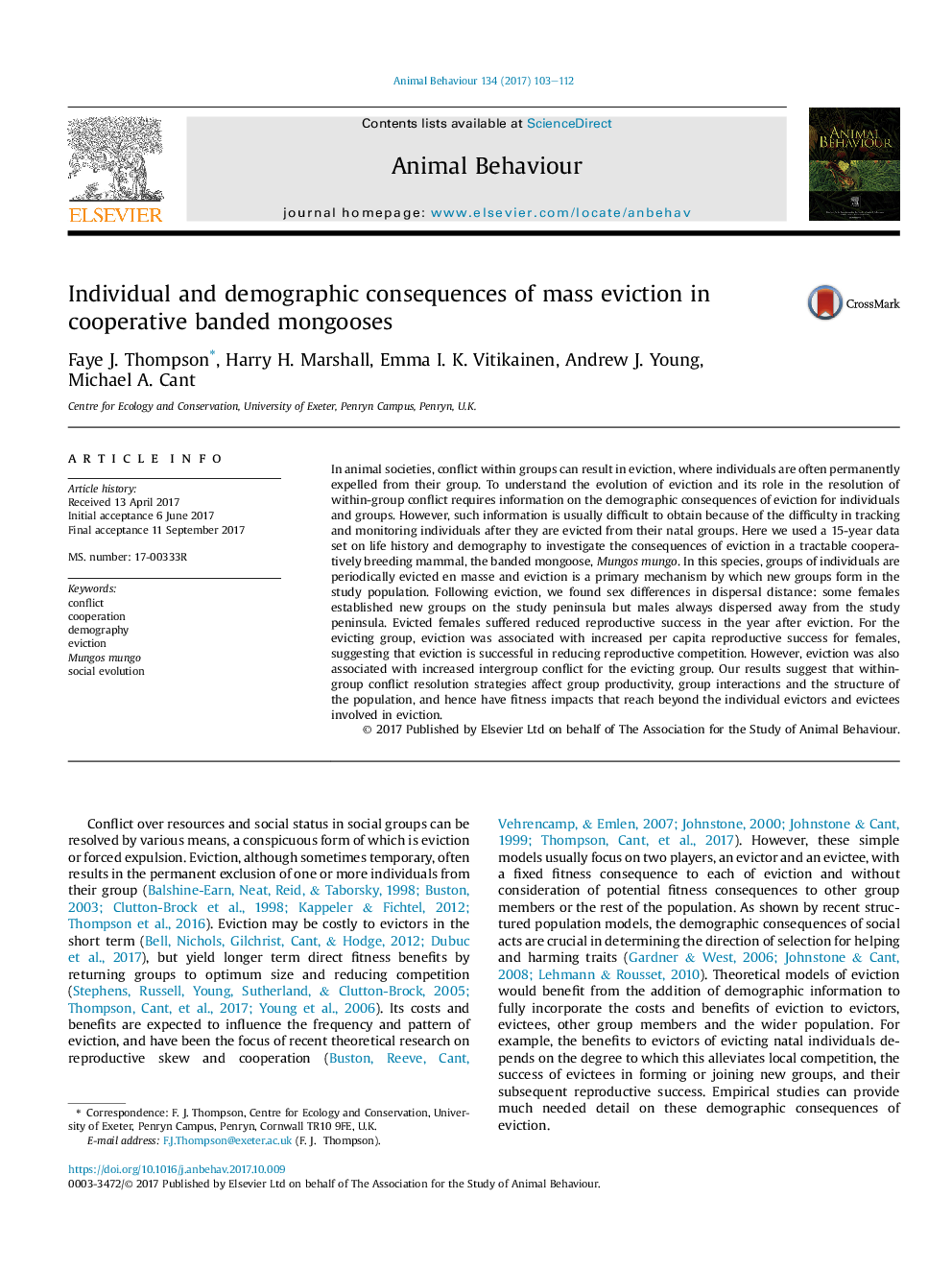ترجمه فارسی عنوان مقاله
پیامدهای فردی و جمعیت شناختی از انهدام انبوه در مغولوزهای باند تعاونی
عنوان انگلیسی
Individual and demographic consequences of mass eviction in cooperative banded mongooses
| کد مقاله | سال انتشار | تعداد صفحات مقاله انگلیسی |
|---|---|---|
| 138494 | 2017 | 10 صفحه PDF |
منبع

Publisher : Elsevier - Science Direct (الزویر - ساینس دایرکت)
Journal : Animal Behaviour, Volume 134, December 2017, Pages 103-112

